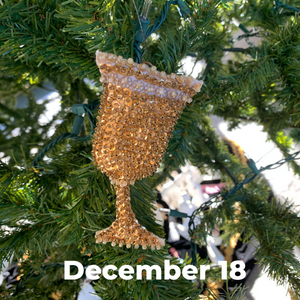December 18, 2021

The Chalice
The Chalice represents the Eucharist, Sacrament of Holy Communion .
They devoted themselves to the apostles’ teaching and to fellowship, to the breaking of bread and to prayer.
Acts 2:42
From our congregation’s beginning in the early 1880s and for the next several years, a traveling priest was present only a few Sundays a month. The bishop would arrive by train to confirm and baptize once a year.
Thus, when the new meeting house for Christ Episcopal was under construction in 1905, the worship space was designed for one main purpose – morning prayer with no eucharist.
Times changed, and, as our congregation grew to afford a full-time priest, monthly and then weekly eucharist was celebrated.
Circumstances often dictate how we express faith in God. Luke, the chronicler of the Pentecost story in Acts, describes the communal life of the first converts in Jerusalem: They devoted themselves to the apostles’ teaching, were in fellowship with each other, ate together, and prayed (2:42). Luke vividly describes a diverse throng of people from throughout the known world speaking different languages, wearing different clothes and having different social customs.
Nevertheless, they were one as they gathered to worship, share and learn about becoming Christ-followers. The early Christians faced difficulties, persecutions and trials, but the eucharist shored up their resolve to stand firm.
The same is true today. No matter where we are, how we worship, what language we speak, where we live, who we live with, what kind of music is played – we all come together t around the table for communion. We are one.
Thus, the chalice for us is a powerful unifying symbol of the love we share in Christ.
Patty Benoit